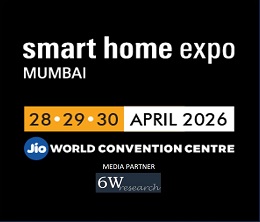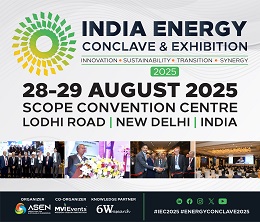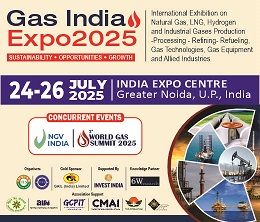Indonesia Agricultural Waste Market (2024-2030) | Growth, Companies, Outlook, Revenue, Value, Trends, Analysis, Forecast, Share, Size & Industry
| Product Code: ETC015108 | Publication Date: Jul 2023 | Updated Date: Aug 2025 | Product Type: Report | |
| Publisher: 6Wresearch | No. of Pages: 70 | No. of Figures: 35 | No. of Tables: 5 | |
Indonesia Agricultural Waste Market Synopsis
The Indonesia agricultural waste market is projected to register a CAGR of 2.6% during theperiod 2020-2026. The rising population has increased the demand for food which in turn has resulted in an increase in the production of food crops and animal farming that generates a large amount of organic wastes such as husk straw manure etc. creating huge potential for agricultural waste utilization. Furthermore government initiatives towards boosting renewable energy sources are also expected to drive theof this sector over the ed period.
Key Factors Driving the Market
1. Increasing Population: Indonesia growing population and increasing disposable income have led to an increased demand for food products from both industries and households alike - leading to an increase in agricultural output which results in more organic byproducts from farmlands used as fuel or fertilizer by farmers or disposed off through burning or landfills resulting into air pollution issues. This subsequently necessitates proper disposal/treatment of these wastes thereby creating opportunities within thisspace due to its potential application across various sectors like electricity generation biofuel production etc.. 2. Government Initiatives: Government initiatives and regulations aimed at promoting renewable energy sources such as biomass fuels over fossil fuels has provided impetus to utilize available agricultural resources like crop residues animal manure instead traditional sources thus fuelling investments within this area while providing avenues foroperating within this sector space with lucrative opportunities going further ahead thereby driving overall marketsignificantly over the forthcoming years.
Challenges Faced by the Market
1. Limited Awareness Regarding Agricultural Waste Utilization : Despite growing awareness regarding sustainability coupled with need for alternative modes of energy there remains little knowledge among public about efficient methods involving utilization if agricultural waste leading low penetration ratesparticularly amongst rural areas where majority related activities still highly depend on traditional techniques . Thereforelack adequate information can impede adoption rate substantially even though it holds great potential when implemented correctly. 2. High Costs Associated With Harvesting Technologies : Presently harvesting technologies involved with collection storage processes associated with organic forms mostly remain underdeveloped while ones developed require high capital investment costs making them unaffordable even small scale operations along with further reluctance amongst private players investing their funds into technology advancements thereby proving themselves major challenges restraining overallprospects going forward until suitable solutions arrive at affordable prices.
Key Highlights of the Report:
- Indonesia Agricultural Waste Market Outlook
- Market Size of Indonesia Agricultural Waste Market, 2023
- Forecast of Indonesia Agricultural Waste Market, 2030
- Historical Data and Forecast of Indonesia Agricultural Waste Revenues & Volume for the Period 2020-2030
- Indonesia Agricultural Waste Market Trend Evolution
- Indonesia Agricultural Waste Market Drivers and Challenges
- Indonesia Agricultural Waste Price Trends
- Indonesia Agricultural Waste Porter's Five Forces
- Indonesia Agricultural Waste Industry Life Cycle
- Historical Data and Forecast of Indonesia Agricultural Waste Market Revenues & Volume By Product Type for the Period 2020-2030
- Historical Data and Forecast of Indonesia Agricultural Waste Market Revenues & Volume By Nonpoint Source for the Period 2020-2030
- Historical Data and Forecast of Indonesia Agricultural Waste Market Revenues & Volume By Point Source for the Period 2020-2030
- Historical Data and Forecast of Indonesia Agricultural Waste Market Revenues & Volume By Applications for the Period 2020-2030
- Historical Data and Forecast of Indonesia Agricultural Waste Market Revenues & Volume By Food Industry for the Period 2020-2030
- Historical Data and Forecast of Indonesia Agricultural Waste Market Revenues & Volume By Fish Forming Industry for the Period 2020-2030
- Indonesia Agricultural Waste Import Export Trade Statistics
- Market Opportunity Assessment By Product Type
- Market Opportunity Assessment By Applications
- Indonesia Agricultural Waste Top Companies Market Share
- Indonesia Agricultural Waste Competitive Benchmarking By Technical and Operational Parameters
- Indonesia Agricultural Waste Company Profiles
- Indonesia Agricultural Waste Key Strategic Recommendations
Frequently Asked Questions About the Market Study (FAQs):
1 Executive Summary |
2 Introduction |
2.1 Key Highlights of the Report |
2.2 Report Description |
2.3 Market Scope & Segmentation |
2.4 Research Methodology |
2.5 Assumptions |
3 Indonesia Agricultural Waste Market Overview |
3.1 Indonesia Country Macro Economic Indicators |
3.2 Indonesia Agricultural Waste Market Revenues & Volume, 2020 & 2030F |
3.3 Indonesia Agricultural Waste Market - Industry Life Cycle |
3.4 Indonesia Agricultural Waste Market - Porter's Five Forces |
3.5 Indonesia Agricultural Waste Market Revenues & Volume Share, By Product Type, 2020 & 2030F |
3.6 Indonesia Agricultural Waste Market Revenues & Volume Share, By Applications, 2020 & 2030F |
4 Indonesia Agricultural Waste Market Dynamics |
4.1 Impact Analysis |
4.2 Market Drivers |
4.3 Market Restraints |
5 Indonesia Agricultural Waste Market Trends |
6 Indonesia Agricultural Waste Market, By Types |
6.1 Indonesia Agricultural Waste Market, By Product Type |
6.1.1 Overview and Analysis |
6.1.2 Indonesia Agricultural Waste Market Revenues & Volume, By Product Type, 2020-2030F |
6.1.3 Indonesia Agricultural Waste Market Revenues & Volume, By Nonpoint Source, 2020-2030F |
6.1.4 Indonesia Agricultural Waste Market Revenues & Volume, By Point Source, 2020-2030F |
6.2 Indonesia Agricultural Waste Market, By Applications |
6.2.1 Overview and Analysis |
6.2.2 Indonesia Agricultural Waste Market Revenues & Volume, By Food Industry, 2020-2030F |
6.2.3 Indonesia Agricultural Waste Market Revenues & Volume, By Fish Forming Industry, 2020-2030F |
7 Indonesia Agricultural Waste Market Import-Export Trade Statistics |
7.1 Indonesia Agricultural Waste Market Export to Major Countries |
7.2 Indonesia Agricultural Waste Market Imports from Major Countries |
8 Indonesia Agricultural Waste Market Key Performance Indicators |
9 Indonesia Agricultural Waste Market - Opportunity Assessment |
9.1 Indonesia Agricultural Waste Market Opportunity Assessment, By Product Type, 2020 & 2030F |
9.2 Indonesia Agricultural Waste Market Opportunity Assessment, By Applications, 2020 & 2030F |
10 Indonesia Agricultural Waste Market - Competitive Landscape |
10.1 Indonesia Agricultural Waste Market Revenue Share, By Companies, 2023 |
10.2 Indonesia Agricultural Waste Market Competitive Benchmarking, By Operating and Technical Parameters |
11 Company Profiles |
12 Recommendations |
13 Disclaimer |
- Single User License$ 1,995
- Department License$ 2,400
- Site License$ 3,120
- Global License$ 3,795
Search
Related Reports
- ASEAN Bearings Market (2025-2031) | Strategy, Consumer Insights, Analysis, Investment Trends, Opportunities, Growth, Size, Share, Industry, Revenue, Segments, Value, Segmentation, Supply, Forecast, Restraints, Outlook, Competition, Drivers, Trends, Demand, Pricing Analysis, Competitive, Strategic Insights, Companies, Challenges
- Europe Flooring Market (2025-2031) | Outlook, Share, Industry, Trends, Forecast, Companies, Revenue, Size, Analysis, Growth & Value
- Saudi Arabia Manlift Market (2025-2031) | Outlook, Size, Growth, Trends, Companies, Industry, Revenue, Value, Share, Forecast & Analysis
- Uganda Excavator, Crane, and Wheel Loaders Market (2025-2031) | Strategy, Consumer Insights, Analysis, Investment Trends, Opportunities, Growth, Size, Share, Industry, Revenue, Segments, Value, Segmentation, Supply, Forecast, Restraints, Outlook, Competition, Drivers, Trends, Demand, Pricing Analysis, Competitive, Strategic Insights, Companies, Challenges
- Rwanda Excavator, Crane, and Wheel Loaders Market (2025-2031) | Strategy, Consumer Insights, Analysis, Investment Trends, Opportunities, Growth, Size, Share, Industry, Revenue, Segments, Value, Segmentation, Supply, Forecast, Restraints, Outlook, Competition, Drivers, Trends, Demand, Pricing Analysis, Competitive, Strategic Insights, Companies, Challenges
- Kenya Excavator, Crane, and Wheel Loaders Market (2025-2031) | Strategy, Consumer Insights, Analysis, Investment Trends, Opportunities, Growth, Size, Share, Industry, Revenue, Segments, Value, Segmentation, Supply, Forecast, Restraints, Outlook, Competition, Drivers, Trends, Demand, Pricing Analysis, Competitive, Strategic Insights, Companies, Challenges
- Angola Excavator, Crane, and Wheel Loaders Market (2025-2031) | Strategy, Consumer Insights, Analysis, Investment Trends, Opportunities, Growth, Size, Share, Industry, Revenue, Segments, Value, Segmentation, Supply, Forecast, Restraints, Outlook, Competition, Drivers, Trends, Demand, Pricing Analysis, Competitive, Strategic Insights, Companies, Challenges
- Israel Intelligent Transport System Market (2025-2031) | Strategy, Consumer Insights, Analysis, Investment Trends, Opportunities, Growth, Size, Share, Industry, Revenue, Segments, Value, Segmentation, Supply, Forecast, Restraints, Outlook, Competition, Drivers, Trends, Demand, Pricing Analysis, Competitive, Strategic Insights, Companies, Challenges
- Uganda Precast and Aggregate Market (2025-2031) | Strategy, Consumer Insights, Analysis, Investment Trends, Opportunities, Growth, Size, Share, Industry, Revenue, Segments, Value, Segmentation, Supply, Forecast, Restraints, Outlook, Competition, Drivers, Trends, Demand, Pricing Analysis, Competitive, Strategic Insights, Companies, Challenges
- Australia IT Asset Disposal Market (2025-2031) | Strategy, Consumer Insights, Analysis, Investment Trends, Opportunities, Growth, Size, Share, Industry, Revenue, Segments, Value, Segmentation, Supply, Forecast, Restraints, Outlook, Competition, Drivers, Trends, Demand, Pricing Analysis, Competitive, Strategic Insights, Companies, Challenges
Industry Events and Analyst Meet
Our Clients
Whitepaper
- Middle East & Africa Commercial Security Market Click here to view more.
- Middle East & Africa Fire Safety Systems & Equipment Market Click here to view more.
- GCC Drone Market Click here to view more.
- Middle East Lighting Fixture Market Click here to view more.
- GCC Physical & Perimeter Security Market Click here to view more.
6WResearch In News
- Doha a strategic location for EV manufacturing hub: IPA Qatar
- Demand for luxury TVs surging in the GCC, says Samsung
- Empowering Growth: The Thriving Journey of Bangladesh’s Cable Industry
- Demand for luxury TVs surging in the GCC, says Samsung
- Video call with a traditional healer? Once unthinkable, it’s now common in South Africa
- Intelligent Buildings To Smooth GCC’s Path To Net Zero













